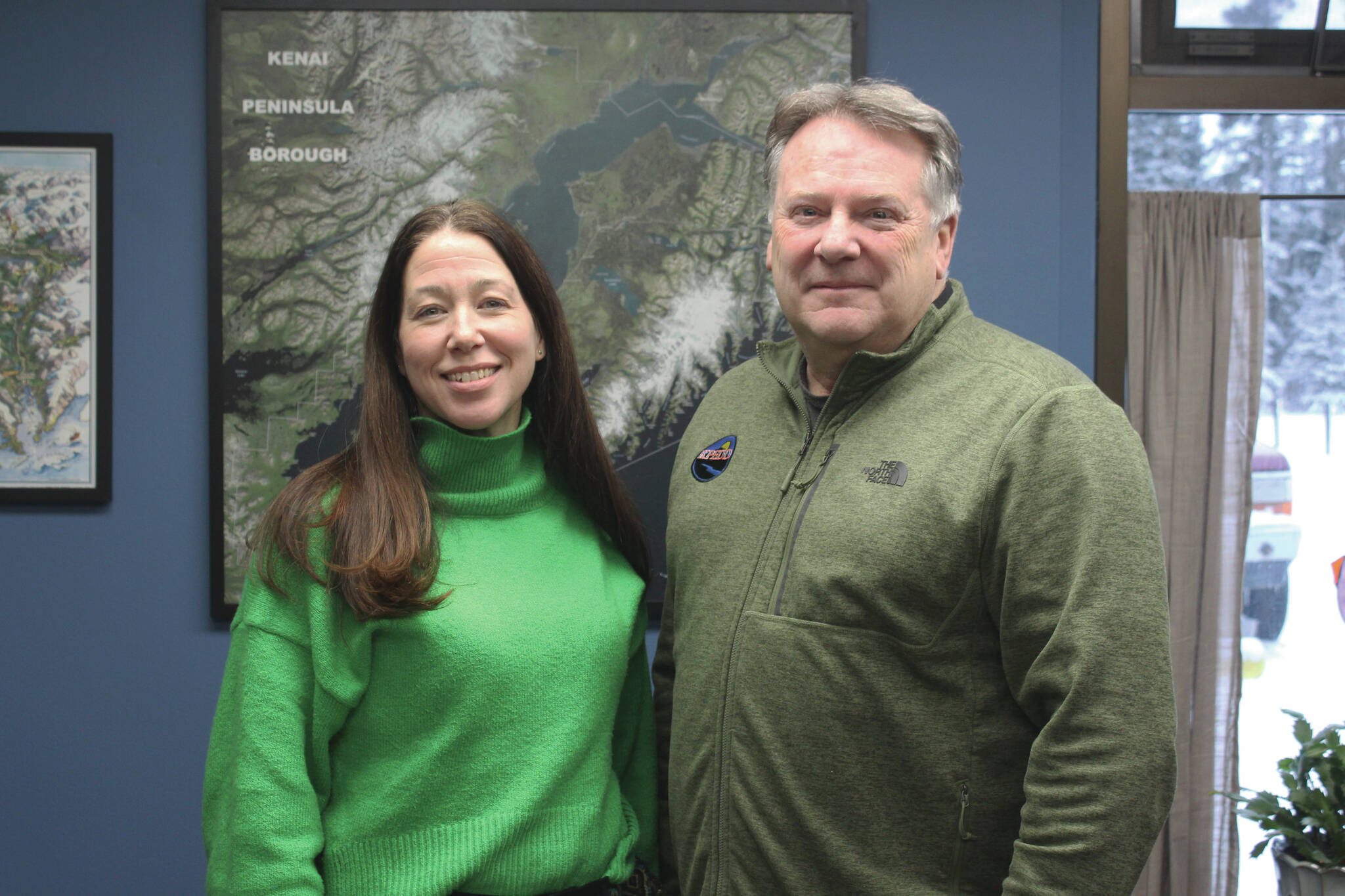When Tim Dillon steps down as head of the Kenai Peninsula Economic Development District at the end of the month, he’ll be handing the reigns over to a familiar face. Cassidi Cameron currently manages special projects for the organization — a nongovernment group with a stated mission of enhancing the quality of life for borough residents through responsible and sustainable economic development.
The organization, a 501(c)(4) nonprofit, was founded in 1988 and was the first economic development district designated in Alaska. KPEDD hosts the Kenai Peninsula’s annual Industry Outlook Forum, connects businesses and governments to grant and other funding opportunities and every five years crafts a comprehensive economic development strategy on behalf of the Kenai Peninsula for the federal government.
Dillon has headed up the organization since 2016, when he stepped down as the city manager in Seldovia to step up as KPEDD’s executive director. Since then, he said both the makeup and role of KPEDD has changed from a group largely composed of government employees to a more diverse cohort that also includes business owners.
“I felt that we could develop a brand that, being a nongovernment organization, that we could be that go-to group to help people,” Dillon said. “ … We really started in (2016) of trying to identify ‘OK, who are we and what can we do to help?’”
The team behind KPEDD is small — just four people that includes Dillon, Cameron, Programs Manager Caitlin Coreson, and Research Assistant Abby Dial. Dillon and Cameron said one of the reasons the group works well together is because they all bring a different perspective to the table. Dial, for example, is a 2021 graduate of Connections Homeschool, who Dillon said has helped grow KPEDD’s online presence.
Cameron said her current role managing special projects is finding and then assembling puzzle pieces.
“I identify the pieces of the puzzle and get the individual or entity to where they need to be so they can be successful,” she said.
Mariculture, for example, is one industry she said has been getting a lot of attention in Alaska, and on the Kenai Peninsula involves several pieces. Communities in Kachemak Bay, she said, like Halibut Cove and Seldovia, are ideal for mariculture farming. There are also peninsula fish processors who’ve been affected by inconsistent salmon runs.
The potential exists, Cameron said, for those circumstances to complement each other. Pair that with the Kenai Peninsula’s location on the road system, which is unique compared to other mariculture-friendly communities in Southeast Alaska, and there may be a recipe for success. Easy access to the Port of Anchorage, she said, is a major asset.
“We could start to think about the international market (and) the international opportunities for this industry,” Cameron said. “That’s really exciting. I think that if we play our cards right, we can put ourselves on the map for Alaska mariculture in a global sense.”
Another puzzle Cameron said she’s actively assembling is broadband, or internet access. Roughly one in 10 Alaskans doesn’t have internet access and more than 80% are unable to get broadband at an affordable price. That’s according to the Alaska Broadband Office, the state entity responsible for managing federal funds given to Alaska to help expand broadband access.
In addition to being KPEDD’s top priority in the organization’s 2021 Comprehensive Economic Development Strategy, significant financial resources were made available for broadband expansion through the federal Infrastructure Investment and Jobs Act’s Broadband Equity, Access and Deployment program. Cameron’s job involves figuring out how to direct what she called a “wave” of funding toward the Kenai Peninsula.
“It’s something that needs to be in every single household and Alaska’s pretty behind the ball in terms of being completely connected,” she said.
Dillon is also planning to stay connected with KPEDD after his official last day on Dec. 31. He’s keeping an office in the organization’s Kenai building and Cameron said she expects the transition to be smooth.
“I’m just going to keep up what Tim has charted for this course,” she said. “He’s made it very easy to pick up the ball and keep going.”
Sharing Dillon’s office with his large fish tank and a jar of jelly beans are miscellaneous awards, keepsakes and other memorabilia from his time at KPEDD. On the wall across from his desk is a framed resolution passed by the Kenai Peninsula Borough Assembly last month — just one of the ways his work has been celebrated since he announced his plans to step down as executive director.
“The Kenai Peninsula Borough Assembly extends great appreciation for the leadership Tim Dillon as exhibited as Executive Director of the Kenai Peninsula Economic Development District, and for his many years of dedication and commitment to our Borough,” the commending resolution says.
Cameron said their team is not yet clear on whether they’ll be bringing on a new staff member to take over the position she’ll be vacating. Ultimately, it will come down to what KPEDD’s budget can accommodate and how well things are running with a three-person team. Dillon said he’s looking forward to relaxing with his wife while still doing occasional consulting work.
“I still think I have something to offer, but I want to do it on my own terms,” he said.
Cameron said, for her part, that she’s ready to get started.
“We have a lot to look forward to,” she said. “I’m very excited and I’m very grateful to be able to have this opportunity, for KPEDD and for the peninsula.”
More information about the Kenai Peninsula Economic Development District can be found on the organization’s website at kpedd.org.
Reach reporter Ashlyn O’Hara at ashlyn.ohara@peninsulaclarion.com.


